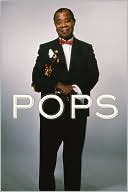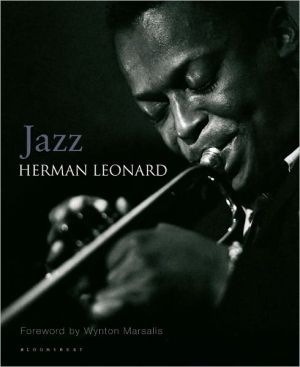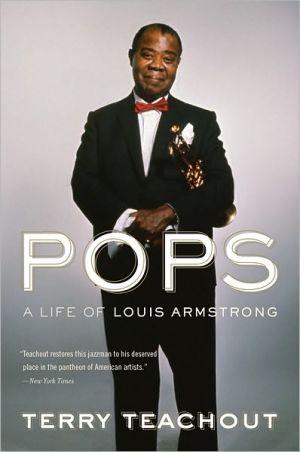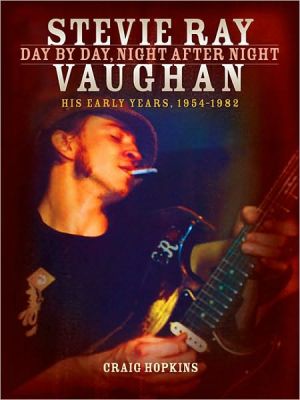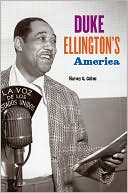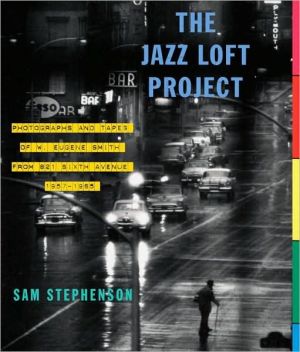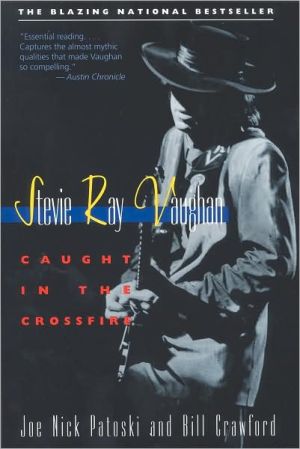Soul on Soul: The Life and Music of Mary Lou Williams
Pianist, composer, and arranger, Mary Lou Williams (1910-1981), was one of the most significant and influential artists in the history of jazz. A versatile musical genius who experimented with and mastered most of the emerging styles in jazz's evolution, Williams wrote and arranged for such greats as Duke Ellington and Benny Goodman, and she was friend, mentor, and teacher to the likes of Thelonious Monk, Charlie Parker, and Dizzy Gillespie. Yet throughout her prolific career of nearly six...
Search in google:
A chronicle of the stormy personal and professional life of the legendary but underappreciated jazz pianist, composer, and arranger. Library Journal Mary Lou Williams was a musician's musician, respected by other jazz instrumentalists, particularly other pianists and arrangers. She was also the only person to have been a creative force in every era of jazz, from ragtime through modern. In this welcome biography, Kernodle (music, Miami Univ.) does not include new material or counter Linda Dahl's Morning Glory: A Biography of Mary Lou Williams (2000), but she does present a portrait gritty with the day-to-day adversities Williams faced in her early years and shows that she emerged more confident. While Dahl's book is a better read, Kernodle's knowledge of jazz and of music in general enables her to discuss Williams's playing with greater depth and specificity. She also more intimately portrays Williams as a woman contending with segregation and even the prejudice of fellow black musicians whose balky acceptance of her came only with their realization that she played "like a man." Sadly, 23 years after her death, her place in jazz history remains undecided. Kernodle's book, in conjunction with Dahl's, is pushing to change that. Highly recommended for all jazz collections.-Harold V. Cordry, Baldwin, KS Copyright 2004 Reed Business Information.
Soul on Soul\ THE LIFE AND MUSIC OF MARY LOU WILLIAMS \ \ By Tammy L. Kernodle \ Northeastern University Press\ Copyright © 2004 Tammy L. Kernodle\ All right reserved.\ ISBN: 1-55553-606-9 \ \ \ \ Chapter One\ I DREAM A WORLD \ How can we sing the songs of the Lord while in a foreign land? -Psalm 137:4\ In 1977, at the age of sixty-seven, Mary Lou Williams-a noted pianist, composer, and activist-left her New York apartment and headed for the rural academic environment of Duke University in Durham, North Carolina. It was the culminating event of a career that had spanned more than fifty years and had yielded a myriad of compositions, performances, and historic firsts. The "little piano girl" of East Liberty had come a long way from the poverty that defined her early years in Atlanta, Georgia, and still haunted her during the 1960s while jazz struggled to stabilize its place in American popular culture. As artist-in-residence, a first for Duke, Williams witnessed the fruition of her childhood dreams of bridging cultural gaps through music and the victory of her crusade of the past decade to educate others about the cultural roots of jazz.\ Unfortunately, in less than four years, Mary Lou Williams would pass from this world to the next. She would succumb to the cancer that ravaged her body, just as Americans were rediscovering her as an innovative pianist and composer. Her legacy, however, was not lost in the numerous obituaries that chronicled her life of pain and triumph. In the years since her death, Mary Lou Williams's legacy has been sustained by recordings, festivals, buildings, and private collections that bear her name.\ From the very beginning, it was obvious that Mary was an exceptional child. The second of two children, Mary Elfrieda Scruggs was born in Atlanta, Georgia, on May 8, 1910, to Virginia Riser and Joseph Scruggs. Twenty-three years old and unmarried at the time of the birth, Virginia assumed sole responsibility for raising her children after Scruggs, who was already married with children of his own, abandoned her.\ Joseph Scruggs was never mentioned in family discussions and was not identified as Mary's father until the late 1930s. It was then that twenty-eight-year-old Mary met her half brother Willis Scruggs, while traveling through Georgia with Andy Kirk and the Twelve Clouds of Joy. Willis introduced Mary to her father, but the meeting proved to be less than congenial. For many years, Mary and other sources had identified Mose Winn as her father. Shortly after Virginia had conceived Mary, she married Winn, though she divorced him soon afterwards. Virginia's retention of Winn's last name and the public knowledge of this marriage may have contributed to this speculative paternity. For the first ten or eleven years of her life, Mary assumed that Mose Winn was her father, which also accounts for the several surnames attributed to her in the early literature.\ The unique nature of Mary's spirit was heralded immediately after her delivery, when the midwife announced to Virginia and the other women of the family that the child had been born with a "veil" over her eyes, caused by a portion of the membrane becoming attached to the face of the infant while she passed through the birth canal. Within southern black folklore, this veil was an omen that the child would have extra-sensory perception or second sight-the ability to see spirits or ghosts. Mary would spend most of her childhood and adolescent years terrified by her visions; but in later years she learned to channel this energy into her music. She said it enabled her to compose some of her greatest arrangements spontaneously, without notation. Later, Virginia recounted many of the visions Mary saw as a child and shared with family members.\ Mary's visions continued into adulthood. While traveling with the Andy Kirk band, her husband, John Williams, tied her to the bed because of the visions she had. Mary recounted one of those instances:\ When I was with the Andy Kirk band my husband used to have to tie me in bed because in a hotel, a very bad hotel, I remember walking up the steps going into the hotel and I saw a man standing at the top with his head hanging off. I'd run or something, you know what I mean, and they'd say, there she goes again. It's like a nightmare. Whatever happened in that room, maybe a suicide or I don't know what it is, I'd see strange things from it, you know.\ * * *\ The early years in Atlanta were particularly difficult for Virginia, Mary, and her older sister, Mamie. Only four years older than Mary, Mamie assumed responsibility for the young girl while their mother worked. Without financial support from Scruggs, Virginia was forced to work long hours and was often away from her children.\ Virginia had been the oldest child born to former slaves, Anna Jane Riser and Andrew Riser. In defiance of her servitude during slavery, Anna Jane refused to retain the name of her slave master after her emancipation, instead marrying Andrew Riser. She gave birth to three children: Virginia in 1887, Anna Mae in 1904, and Andrew Jr. in 1912. Described by family members as a strong woman who ran her household with unrelenting discipline, Anna Jane reminded her children and subsequent grandchildren of the trials black people had endured during slavery and pushed them to become good citizens who contributed something to their community.\ Not much is known of the older Andrew Riser except that he was quiet, worked hard, liked to build things, and often kept the women in line when their weekend celebrations got out of hand. He talked and played with Mary, thus providing her with a strong male presence. The two of them would occasionally take walks and watch the trains pass over the nearby trestle. According to Mary, Andrew often passed out candy to the neighborhood children and once built a train that had a real boiler. His life aspirations extended beyond his work as a laborer, but Jim Crow laws and discrimination never allowed him to achieve them. Nevertheless, he diligently saved his money in hopes of one day owning real estate. In many ways, he provided Mary with the attention that she needed as a young child and that Virginia's work schedule wouldn't allow her to give.\ Work and church became the backbone of the Riser household and all family members contributed to the stability of the home through their labor and to their community through participation in their church. Described as being of a deep and beautiful hue of chocolate brown with a petite frame, Virginia was a free spirit and enjoyed life to its fullest. She loved music and is remembered playing the organ, singing, or dancing. Working in the homes of whites during the week, Virginia spent most of her Sundays at the local Baptist church. Though her talent might have inspired a musical career, Virginia's race, gender, and geographic location dictated a different course.\ Though black minstrel troupes and the stage performances of black prima donnas such as Emma Louise, Marie Selika Williams, and Sissieretta Jones (also known as "Black Patti"-a reference to the diva Adelina Patti) had brought the music and musical talents of blacks to America's mainstream stages, few black musicians or singers pursued the life of the stage as an occupation during the late nineteenth and early twentieth centuries. Women were often cautioned against pursuing these aspirations, since the lifestyle exposed them to harsher realities than domestic work. Black women, in particular, were restricted in their means of public expression and often limited their music making to the home or church. Virginia was no exception. By 1906, the year of the birth of her first child, Mamie, Virginia found herself constrained by both her gender and her race in turn-of-the-century Atlanta.\ Even decades after the dismantling of slavery-the institution that had fueled the southern economy for centuries-the opportunities for blacks in the southern United States were limited. Within self-contained black communities, little had changed since the end of the Civil War. Poverty and the enactment of segregation laws served as daily reminders of the resistance to their integration into American society. Promises of a "new start" for Anna Jane, Andrew, and other freed slaves were tainted by the social and economic chaos of the Reconstruction years and the political activities of southern politicians and northern carpetbaggers. Reconstruction governments and agencies, supposedly designed to help blacks become a part of society, failed primarily because northern industrialists joined with southern farmers and enacted new ways to disenfranchise blacks. LeRoi Jones (also known as Amiri Baraka) has asserted that this alliance grew out of the fear "that a coalition of the poor and disenfranchised southern whites, the disillusioned agrarian interests, and newly freed Negroes, might prove too strong a threat" to the northerners' aspirations to exercise "absolute political and economic control of the South."\ The devastation of the southern economy during the Civil War and the enactment of "Jim Crow" laws after the Reconstruction years left the Risers and other black families with few options other than agricultural labor or northern migration. Men found it easier to move throughout the South and North in search of employment and new lives, but women did not have such opportunities. Most remained in areas where they could receive community and familial support. Thus agricultural work, domestic service, and taking in the laundry of whites and blacks became the main forms of employment for southern black women.\ With almost 2.7 million black women and girls over the age of ten in the southern black population, there was a need for jobs that could provide substantial income. By 1890, 38.7 percent of southern women worked in agriculture, 30.8 percent in household domestic service, 15.6 percent in laundry work, and a negligible 2.8 percent in manufacturing. Sharecropping, a system of peonage that drew in those individuals who succumbed to financial need, became one of the major forms of employment for both men and women.\ Anna Jane, Virginia, and Anna Mae chose laundry and domestic work over the backbreaking work and low wages of sharecropping, but even these jobs had their drawbacks. Domestic work was as time-consuming as agricultural work and often separated families for long periods of time. Although an improvement over agricultural work, domestic service was demanding and left little time for family life. With the birth of one child in 1906 and another in 1910 and the lack of any support by the fathers, Virginia faced a dismal economic situation. The limited financial support the Risers offered and the scarce employment opportunities for black women in the South placed Virginia at a disadvantage. At a time when Mary and Mamie needed their mother the most, she was forced to leave her children with Anna Jane and her grandmother Matilda Parker (Mary's great-grandmother, who was believed to have been a full-blooded Native American). Virginia hired herself out as a domestic and was often required to stay at the home of her employer.\ Like most domestics, Virginia lived in the households where she was employed and worked as many as fourteen hours a day. She was allowed to visit her own family once every two weeks, but her main focus was expected to be the welfare of her employer's family. Like all domestics, she was vulnerable to the sexual advances of her male employers, who knew they could easily exploit their domestics without repercussions; after all, no one would believe the allegations of a black woman against a white man. It is not known if Virginia suffered from this type of sexual exploitation, as this would not have been discussed in the presence of children, but most domestics did. Virginia and other domestic women workers were further exploited when unscrupulous employers occasionally decided not to pay employees their wages or paid them at a lower rate than was initially agreed upon. In time, Virginia opted to leave domestic servitude for laundry work. Taking in the laundry of white Atlantans and some blacks afforded Virginia the opportunity to spend more time with her children, although the two girls were still mostly left to their own devices. Despite Virginia's hard work, the family still lived in near-poverty conditions, which was not uncommon for most working-class blacks in Atlanta and other areas of the South.\ Most black Atlantans in the early 1900s lived in underdeveloped neighborhoods. Houses were made of cheap materials set on shaky brick piles, located on crudely constructed roads and in the dark hollows of alleys. As the black population of Atlanta began to increase, the areas in which they resided expanded and in most cases the living conditions worsened. Mary and her family lived in a "shotgun" house, so called because "a bullet fired in the front would go straight out the back." The shotgun house, a common sight in the South, was actually African in origin. The structure was designed to act as a breezeway: the air entering the front gallery would circulate and cool the bedrooms, usually two, and any additional rooms beyond. This architecture made these homes bearable in the extreme temperatures of southern summers and was common for working-class and poor neighborhoods where multiple families shared outhouses and public wells.\ Virginia, like most black Atlantans, found relief in the parties she, Anna Jane, and other family members hosted on weekends. They would drink, sing, and dance, escaping the pressures of life through laughter and intoxication. But the weekends in the Riser home were not just about liquor, parties, or Decatur Street, the entertainment district of black Atlanta and an alternative to the house parties. Sunday was dedicated to religious activities, which included Sunday school, morning worship, and sometimes an afternoon service at a different church. These activities continued into the week as the family attended prayer meetings or organizational meetings. During the summer, revivals provided Virginia and other congregants with services of spiritual rejuvenation, surely needed in the tense racial, social, and economic environment of the South. The black church of the early twentieth century continued in its role as the cultural and social nucleus of the black community. Most of these early churches, including the nameless Baptist church Virginia and her family attended, grew from very humble beginnings, such as abandoned buildings or railroad cars. These churches often became the center of black communal life. By 1870 eight black churches existed in Atlanta, and less than a decade later, the number had increased by fourteen. These churches served a multitude of spiritual, social, and political functions. Virginia, Anna Jane, and their families were very active within their respective congregations.\ \ Continues...\ \ \ \ Excerpted from Soul on Soul by Tammy L. Kernodle Copyright © 2004 by Tammy L. Kernodle. Excerpted by permission.\ All rights reserved. No part of this excerpt may be reproduced or reprinted without permission in writing from the publisher.\ Excerpts are provided by Dial-A-Book Inc. solely for the personal use of visitors to this web site. \ \
List of IllustrationsviiiAcknowledgmentsixIntroduction11I Dream a World52Take Me to Froggy Bottom: The Early Musical Years193From East Liberty (Pittsburgh) to Beale Street (Memphis) to Eighteenth and Vine (Kansas City)414Until the Real Thing Comes Along: The Andy Kirk Years (1931-42)635How Do You Keep the Music Playing?816Love on a Two-Way Street: Barney Josephson and Moe Asch997Under the Signs of the Zodiac1218The Calm before the Storm1479The Crossroads17110The Long Journey Back Home19511What a Difference a Day Makes21512A Season of Change23313The Fruits of One's Labor263Notes275Bibliography295Selected Discography312Index315
\ From the Publisher"Soul on Soul offers valuable insights about how gender shaped the opportunities and reputations of the first generation of jazz women... a balanced reading of this legendary jazz pianist... Kernodle's study... establishes a rightful place for Williams as a jazz pioneer."--Register of the Kentucky Historical Society\ \ \ \ \ Library JournalMary Lou Williams was a musician's musician, respected by other jazz instrumentalists, particularly other pianists and arrangers. She was also the only person to have been a creative force in every era of jazz, from ragtime through modern. In this welcome biography, Kernodle (music, Miami Univ.) does not include new material or counter Linda Dahl's Morning Glory: A Biography of Mary Lou Williams (2000), but she does present a portrait gritty with the day-to-day adversities Williams faced in her early years and shows that she emerged more confident. While Dahl's book is a better read, Kernodle's knowledge of jazz and of music in general enables her to discuss Williams's playing with greater depth and specificity. She also more intimately portrays Williams as a woman contending with segregation and even the prejudice of fellow black musicians whose balky acceptance of her came only with their realization that she played "like a man." Sadly, 23 years after her death, her place in jazz history remains undecided. Kernodle's book, in conjunction with Dahl's, is pushing to change that. Highly recommended for all jazz collections.-Harold V. Cordry, Baldwin, KS Copyright 2004 Reed Business Information.\ \

